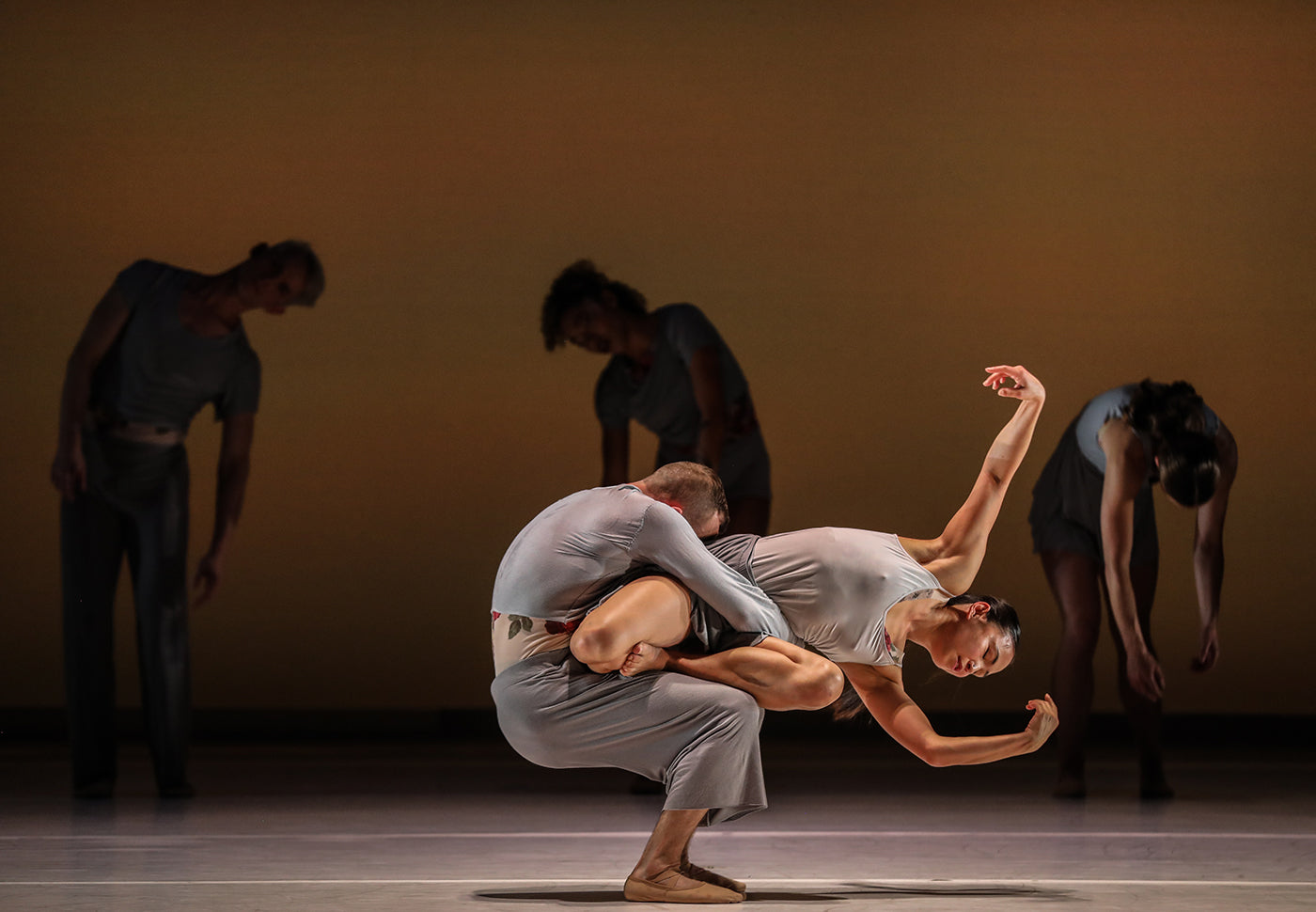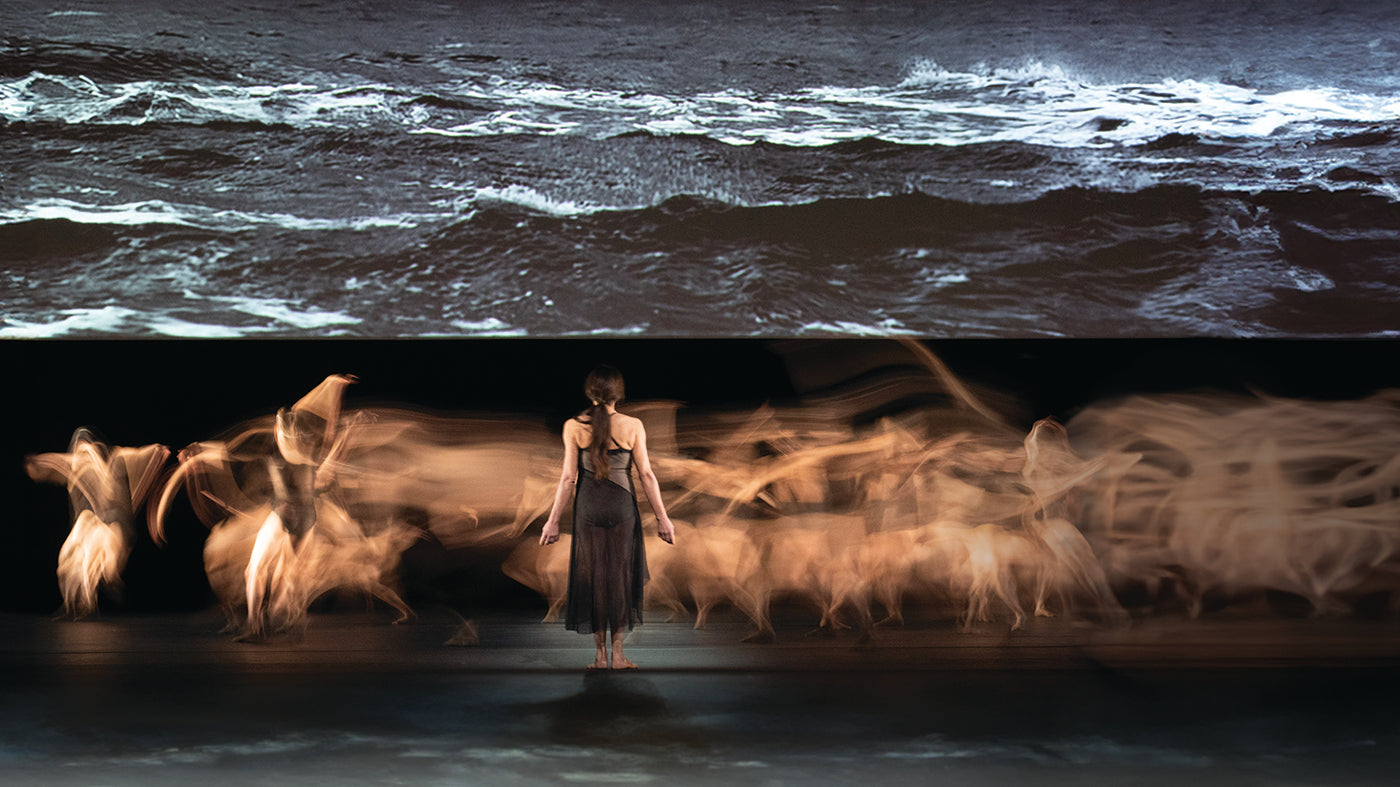Thus are seeds planted. Joffrey would later be responsible for bringing Jooss to New York to restage the work for Joffrey Ballet (the first American company to dance it), and not just at any old time. It was 1967, and the era of Vietnam War protests. In 1973 Joffrey invited the neglected Léonide Massine to revive “Parade” (1917), referred to as the first multimedia ballet; in 1987 Nijinsky’s “Rite of Spring” was reconstructed by Millicent Hodson and Kenneth Archer under Joffrey’s auspices.
These works give a clue to Joffrey’s ambitions. Just as Nijinsky and Massine were game-changers in their day, Joffrey, who died at the age of 57 in 1988, would be one in his. He and Joffrey Ballet co-founder Gerald Arpino made ballet approachable, keenly attuned to their time and very, very sexy. Joffrey may have required his dancers to have strong classical technique but they looked different from George Balanchine’s thoroughbreds at New York City Ballet and the classicists at American Ballet Theatre. In being more open to bodies of different shapes, sizes and colours Joffrey had a company that better reflected the way Americans looked; to that he added an interest in up-to-the-minute social and political trends.
Right from the start Joffrey knew how to reel an audience in. When his first small company (six dancers) piled into a van in 1956 to undertake a series of one-night stands across the land, the program would always contain, as one of his former dancers so pungently puts it in the documentary Joffrey: Mavericks of American Dance, ‘a piece of zestful crap’ to send the crowd out on a high. A decade later Joffrey would be credited with creating the first rock ballet, “Astarte” (1967), which involved huge film projections overlaying the live performance and the then unusual move of having a dancer entering via the auditorium and being seen on film leaving the theatre, wearing not very much at all. ‘It’s a lightshow, it’s sexy, it’s free, it’s outrageous,’ says critic Anna Kisselgoff, interviewed in Mavericks. “Astarte”—the title refers to an ancient fertility goddess—caused such a stir it was featured on the cover of Time magazine. (The Joffrey was also chosen to launch the influential PBS television series Dance in America.)
More was to come. In what has proved an enduring influence, in 1973 Joffrey daringly introduced a darling of the bracing downtown scene, Twyla Tharp, to the uptown ballet world. “Deuce Coupe,” created to the music of the Beach Boys, juxtaposed a ballerina on pointe with a gang of modern dancers. Behind them graffiti artists worked on sheets of paper to form backdrops to each section.
All this emanated from a most unlikely source. Robert Joffrey was born in 1928 in Seattle to Joseph and Mary Joffrey. His father had been born Dollha Anver Bey Jaffa Khan, was a Muslim and came from Afghanistan. His mother was Irish and a Catholic; the two apparently weren’t happy. (Sasha Anawalt’s 1966 book The Joffrey Ballet: Robert Joffrey and the Making of an American Dance Company, published by Scribner and now available as an e-book, is an invaluable resource for Joffrey’s life and work.) It doesn’t do to play the amateur psychologist too much, but one isn’t surprised that Joffrey developed into a rather enigmatic and often remote character.
After starting lessons in jazz and various forms of theatrical dance, Joffrey became passionate about starting his own company. The approach he took to his small output as a choreographer and the work he brought into the Joffrey seems to have had its genesis in his teacher Mary Ann Wells and his early experience of the Ballet Russe de Monte Carlo. The idea of melding classical and modern styles and using popular media came easily to him. The result was, as everyone agrees, a new and decidedly American form of dance, a conclusion much stated in Mavericks, although not deeply analysed. ‘The Joffrey has always defined what American dance can be. It’s about the melding of different ideas,’ says Kevin McKenzie, a former Joffrey dancer and current artistic director of ABT.
Writer and director Bob Hercules covers the major points of the Joffrey’s history fluently, albeit fairly uncritically. We are told Joffrey ‘created dance across America’ with his first small company, but there are no specifics, and the role of the Ballet Russe de Monte Carlo isn’t mentioned in this regard. Mary Ann Wells mixed classical and modern idioms in a way that was ‘completely American’ says Sasha Anawalt in an interview, although what this entailed and what it meant for Joffrey has to be taken as read. There are references to speed and dynamism, but only Adam Sklute, a former Joffrey dancer now heading Ballet West, articulates a little further. He also speaks of energy, but adds that the melding of classical with ‘a more modern-infused work in the torso’ was a trademark.
The contribution of Arpino, Joffrey’s former lover and lifetime companion, is an intriguing and important element to the story, and is treated extremely kindly in the documentary. Arpino started very late as a dancer but was much admired for his dramatic stage personality. When he turned to choreography it was of a kind that often didn’t please critics. In Arpino’s obituary in the New York Times the choreographer was described as one ‘whose works popularised dance with their trendy finger on the nation’s pulse.’ Trinity (1970), with its counterculture theme, was a popular piece, and Anawalt says it felt like a political act to go to the Joffrey—it was dangerous and exciting. But it’s worth quoting Anna Kisselgoff at length from her review of Arpino’s “Light Rain” (1981):
He has a perfect gift for catching the trend of the moment, the passing fad, the changing moral code. He is, in this genre, a total populariser. As such, he is presumably aware that many of his ballets simply cannot and do not last. They catch so much of what is in the air that they frequently have a built-in obsolescence. But they sum up a time, and “Light Rain” is Mr. Arpino in his Asia Minor phase.
“Light Rain”—Kisselgoff also described it as ‘pure hard-core corn’—is often called the signature Joffrey piece, which gives some idea of why for all Robert Joffrey’s achievements, the Joffrey Ballet doesn’t quite get the respect it in many ways deserves. That, at its premiere, “Light Rain” was on the same bill as Frederick Ashton’s “Monotones I” and “A Wedding Bouquet” gives some idea of the company’s zesty eclecticism.
Current Joffrey artistic director (since 2007) Ashley Wheater calls Joffrey the Diaghilev of the mid-20th century for his verve in creating attention-grabbing programs. The Joffrey approach was much wider than most, as alongside the already mentioned masterpieces from the vault the repertoire included Balanchine, Bournonville, Jerome Robbins and Jiří Kylián as well as Arpino. Such a repertoire cries out for illustration, but Mavericks frequently offers extremely short clips of dances it would be most interesting to see at length. Some last no longer than 10 seconds, although there are longer sections from “The Green Room” and “Astarte” when revived in 2002.
Mavericks does a good job of guiding the viewer through the labyrinthine progress of the Joffrey company over decades in which success alternated with potential ruin. Joffrey had a bad falling out with benefactress Rebekah Harkness, who longed to be taken seriously in the dance sphere (she was an administrator and composer as well as a financial backer). Former dancer Francoise Martinet says with admirable frankness that Harkness was ‘not a real talent.’ She would have given her millions ‘to be the least of us.’ Joffrey stood firm against her and her money, and rebuilt.
It’s fascinating to see how many important people in the ballet world passed through the Joffrey company. They include Helgi Tommason, now artistic director of San Francisco Ballet; Ballet West’s Adam Sklute; ABT’s Kevin McKenzie; choreographer Glen Tetley and Ross Stretton, who would graduate to leading administrative roles at ABT, the Australian Ballet and the Royal Ballet. We also hear from dancers of the charisma of Gary Chryst, Christian Holder and, from a later generation, Maia Wilkins.
The sight of Wilkins is a reminder that the Robert Altman film The Company (2003) was filmed with the Joffrey and was based on it. The character played by Malcolm McDowell was inspired by Arpino, who after Joffrey’s death took over as artistic director—although not without opposition. Mavericks has a brief piece relating to The Company presented as a bonus feature; the documentary proper doesn’t mention it. The Altman film is, however, very instructive in the selection of works it includes, often at length. The Company, far more than Mavericks, shows the forceful physicality and sensuality, confident theatricality, heart-on-sleeve emotion and frequent eccentricity that all found expression at Joffrey.
After Joffrey’s death and with the company suffering yet another of its frequent crises of funding, the music of Prince rode to the rescue. The portmanteau work “Billboards” (1992) was flogged around the world, including to the 1994 Melbourne International Festival of the Arts, where audiences greeted it with the wild enthusiasm it whipped up everywhere. It sure wasn’t “Sleeping Beauty” and Joffrey Ballet became something of a one-hit wonder, but it made enough money to get the company back on its feet again. Zestful crap, you might call it.
Joffrey Ballet finally came to rest in Chicago, in 1995. “Billboards” was able to be shelved and the dancers rebuild their classical technique. In 2008, just before Arpino died, Joffrey moved into a glamorous new building and its existence looks secure. In November 2012 Joffrey revived The Green Table to honour its 80th anniversary. The 2012/2013 season continues with a Robbins, a Tharp, Lar Lubovich’s “Othello” and a new Stanton Welch. For the University of North Carolina’s Rite of Spring at One Hundred celebration in March 2013 the Joffrey will perform the Hodson/Archer reconstruction and throw in, among other works, Christopher Wheeldon’s “After the Rain” and William Forsythe’s “In the Middle, Somewhat Elevated” to round out the evening.
The company’s website describes the repertoire as ‘classical and modern, abstract and narrative, tradition and avant-garde.’ With repertoire of this kind the Joffrey doesn’t stand out from the crowd as it used to or make headlines as it once did. The company may no longer be American ballet’s invigorating livewire; that said, no one can take those firsts away from Robert Joffrey. It’s a history worth exploring.









comments